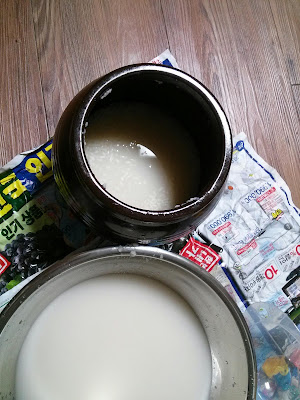Makgeolli has several types/classifications. The easiest way to explain it (IMO) is to classify them by the number of feeds. I previously wrote about Samyangju 삼양주, which has three feeds, but there are also two-feed and single-feed varieties. This is a basic recipe taken from the makgeolli book I purchased a while back. Please visit the previous makgeolli post for a list of tools for making makgeolli. The Recipe: This recipe is for a small batch (1-2 liter yield) single-feed makgeolli. The recipe has 3 ingredients, each requiring some preparation, but it is a much shorter process than samyangju since it is single-feed. I consider this a simple recipe, but it is not the simplest. For example, there are recipes where the process can be further shortened by adding yeast. The addition of yeast decreases brewing time and forgoes the need to specially prepare the nuruk. On the other hand, this recipe is very simple in terms of ingredients, and for this reason it may become t

